Written by Stephany Wilkes. Photographed by Paige Green.
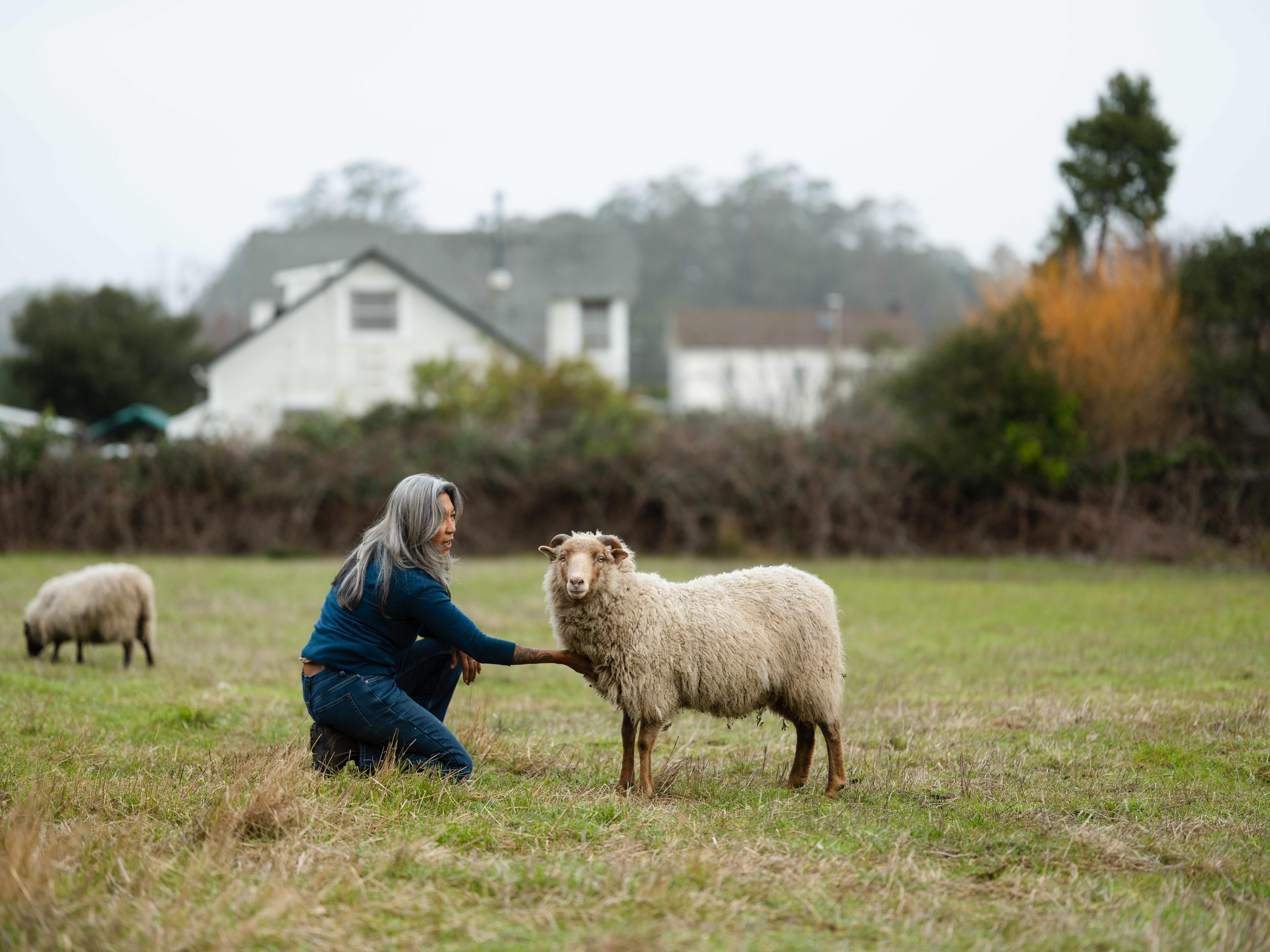
At Blackberry Farm in Bolinas, two generations of women have stewarded the land for 50 years and counting. In 1972, 29-year-old Aggie Murch and her husband, Walter, left a houseboat for a farm across the road from Bolinas Lagoon, on the west side of Mount Tamalpais. Today, Sirima Sataman – printmaker, sculptor, fiber artist; shepherd, farmer, and horticulturalist; mother, wife, and Aggie’s daughter-in-law – is taking soil health deeper, implementing so many climate beneficial practices that it is hard to keep up with them.
“She is working with nature to help the land,” Aggie says. “What Sirima is doing – stewardship of the land – means most. You hold on and make it better than before.”
Blackberry Farm’s seven acres (five grazable) include a white farmhouse with green trim in the middle of the farm, close to the road. The front drive ends at a weathered gray barn. Sheep pasture wraps around the U-shaped property to the left of the house and olive trees, an English-style garden, and greenhouse run behind it. An apple orchard, chicken hutches and pasture, and swale wrap along the right side of the house, toward a large dye garden and ram paddock.
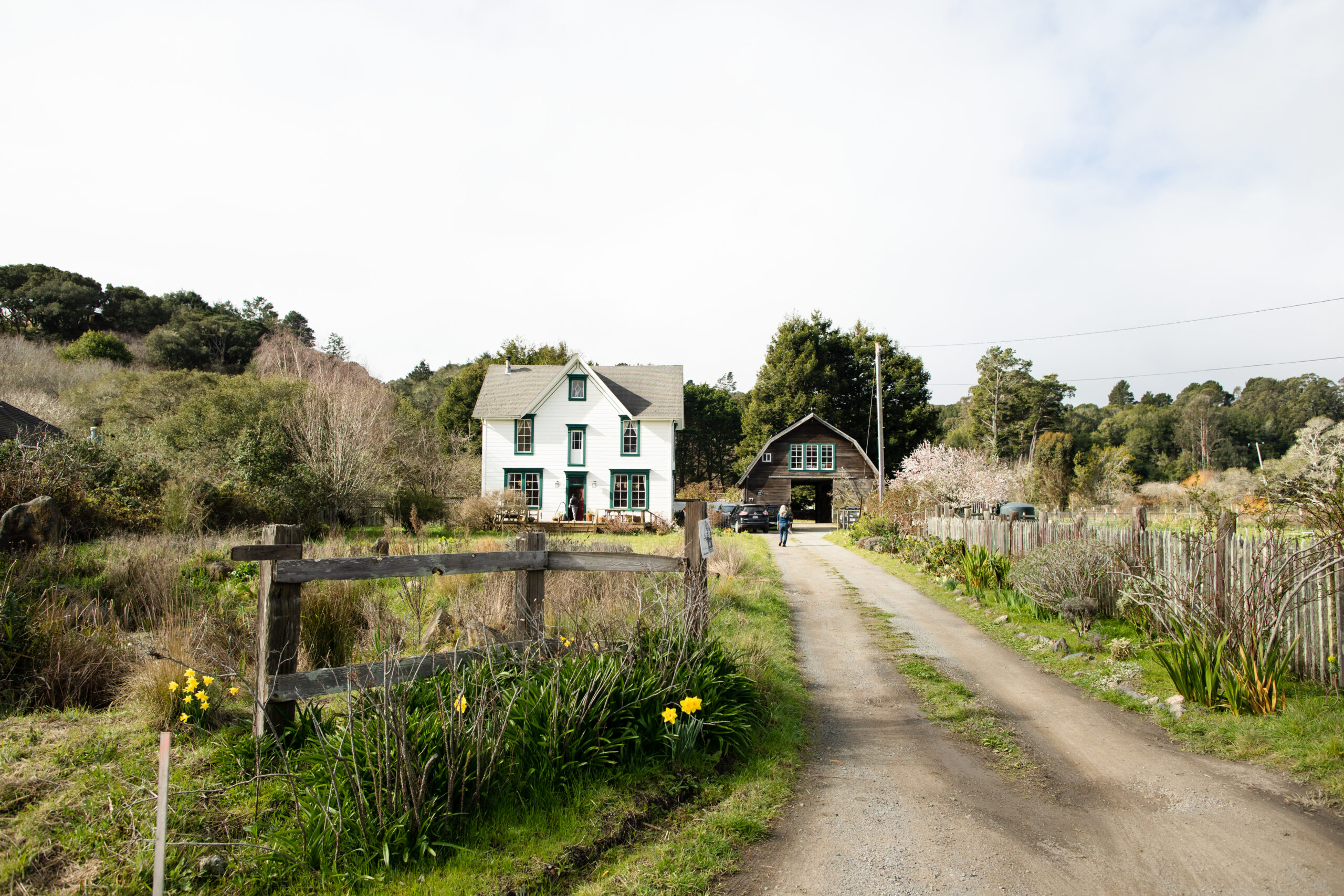
It is a rare dry and sunny morning in a winter of atmospheric rivers and storms. Aggie shares history over tea and homemade scones, on the front porch of the house where she and Walter raised four children.
“It was a wonderfully derelict, very imposing old house,” Aggie says. “We fell in love with it. That front lawn was all daffodils, ten thousand or more. The children sold them by the roadside. Coming here…It was a way to raise children. Chores, not like ‘Make your bed’ but ‘Feed the horses, be home by 5:30 p.m.’ Raising children through the discipline of farming, horses, chickens. We had a constant understory of children. The land itself was a base.”
The 1970s marked a time of peak Bolinas mystique and cultural influence, buoyed by the likes of the Jefferson Airplane, the Grateful Dead, myriad Beat-era poets, and the community practice of removing highway signs to direct visitors away from Bolinas. Though they would not describe themselves as such, Aggie and Walter Scott Murch are legendary, too. A nurse, Aggie was one of the West Marin midwives in Dr. Michael Whitt’s Point Reyes medical practice. As an equestrian, she co-founded the Marin County Pony Club in 1999 and became a founding member and program director for the community radio station KWMR. As Muriel Murch, she is a published author.
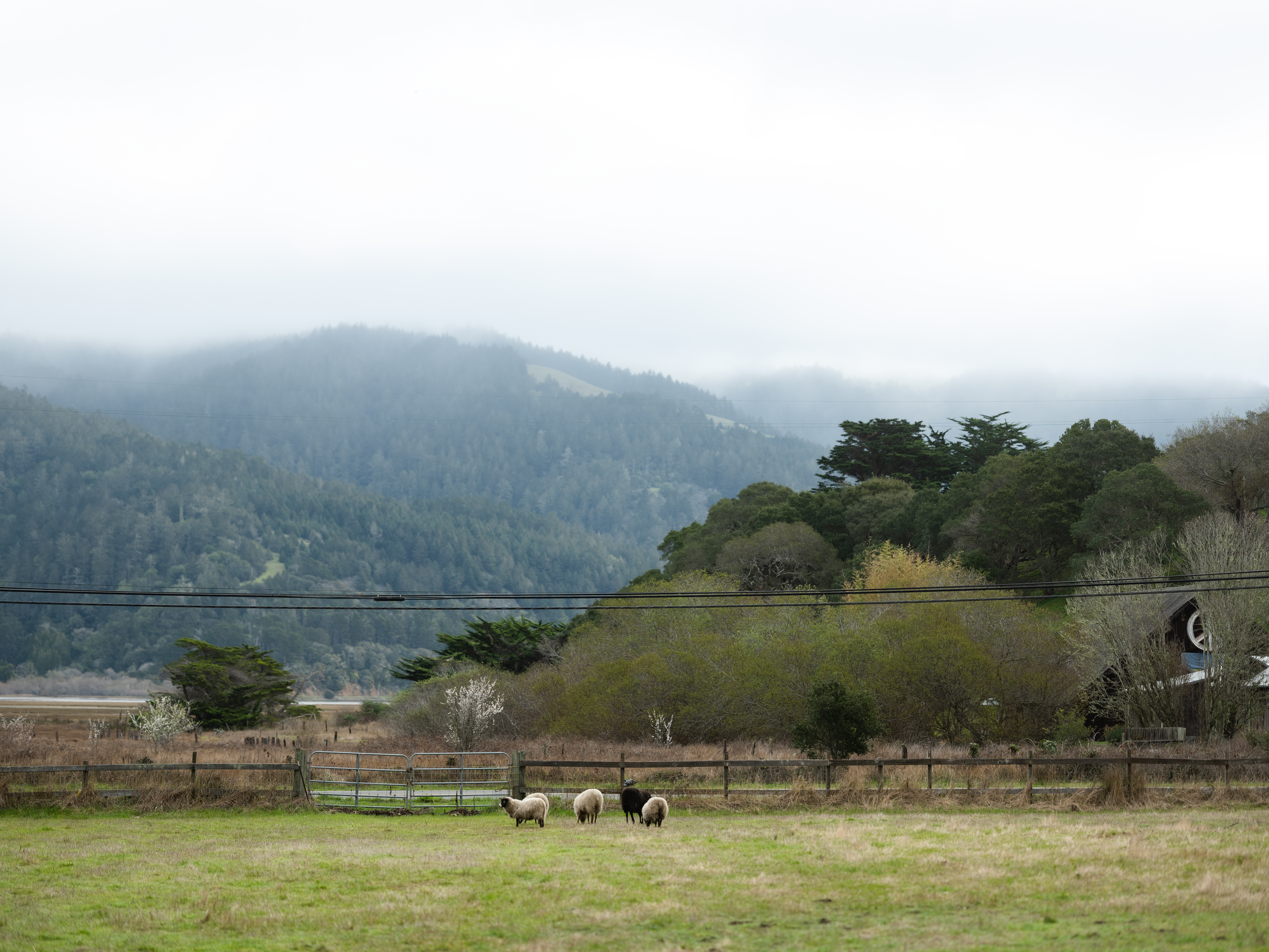
Walter Murch is a world renowned film editor and sound designer. His work on The Conversation, Julia, Apocalypse Now, and The English Patient has earned Oscar and BAFTA awards and his book, In The Blink of an Eye, remains a cinema classic.
Blackberry Farm played host to sustainable agriculture legends, too. Warren Weber started Star Route Farm next door to grow salad greens for Alice Waters at Chez Panisse. And “Bill Niman lived in what is now the upstairs bathroom,” Aggie says, gesturing toward a window with her tea cup. (Niman’s all-natural pig, goat, and chicken operation later became Niman Ranch.)
Aggie tended green things, horses, and children, a linchpin of the Bolinas community. And then, she says, “came the fallow time. The horses died. The children grew up and left home. And I started an orchard.” She planted Wickson crabapple, Pippins, Winter Pearmain, Ashmead’s Kernel, and Bramleys for baking. “The orchard was something that I thought I could do, something that would survive me,” Aggie says.
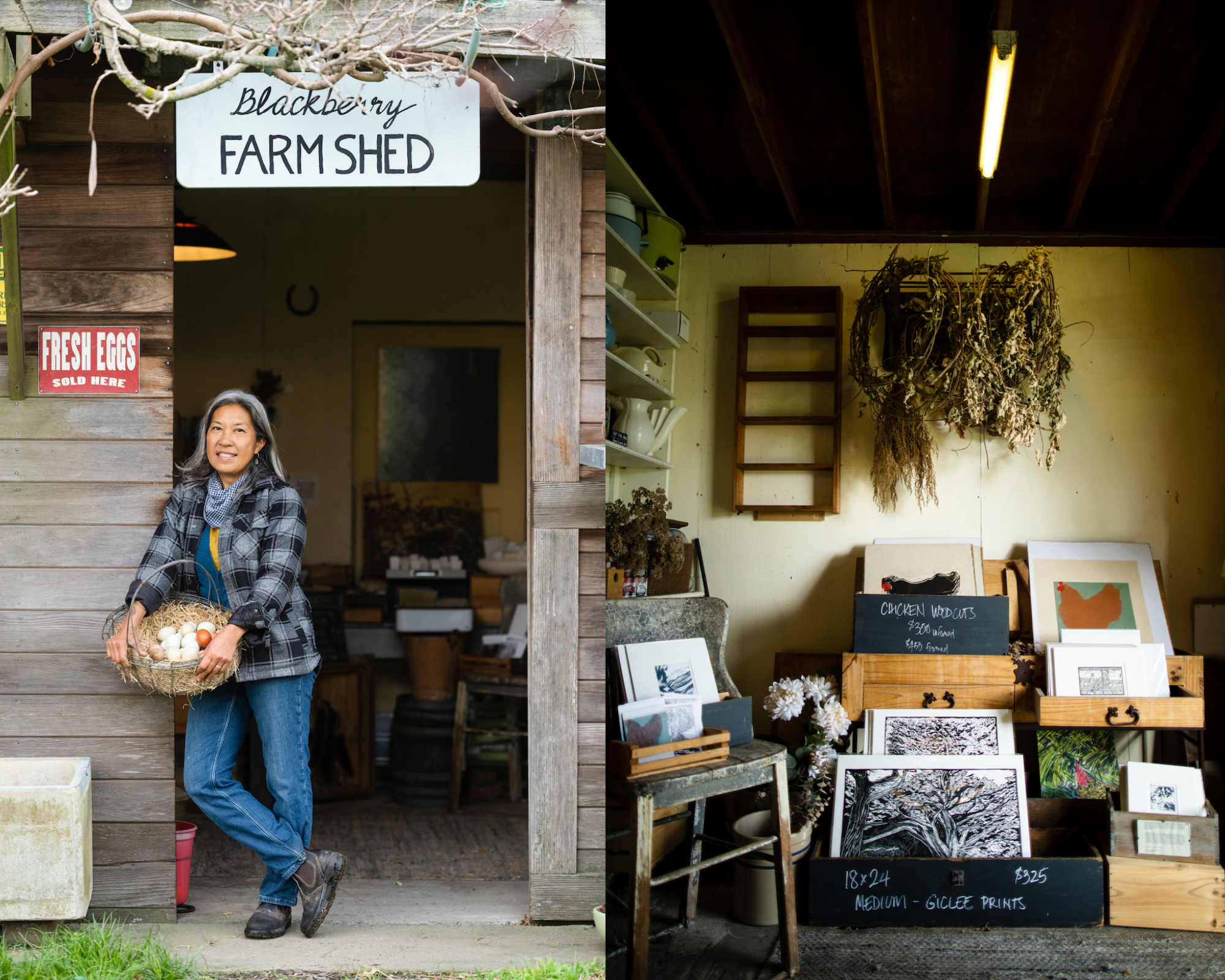
Sirima’s background in landscape architecture, environmental studies, and art gave her the ability to really see Blackberry Farm. With forensic eyes, Sirima looked at the land – at Aggie’s fenced English-style garden, orchards, bees, and willows – and thought, “I see what this is supposed to be, what the intention is,” she says.
The orchard, for example, provided a foundation for silvopasture, in which trees, forage, and animals are managed equally in an interdependent, multispeciated and highly diverse system. Silvopasture creates not just soil but financial benefits: It gives a farm multiple products, one or more from each of the silvopasture components (like apples, cider, chickens, and eggs).
Sirima re-established beekeeping and orchard grazing, bringing sheep and chickens (and their manure and critter control) to the alleys between the apple trees. Thanks to a Carbon Farm Seed Fund grant from Fibershed, she has planted more native plants as a pollinator hedgerow and improved the mix of forage and permanent cover crop.

“Instead of being annoyed that willow or hazelnut is clogging stuff up, we coppice!” Sirima says. She stops beside a narrow swale that runs the length of the orchard and will soon support a hedgerow. “I’ll grow willow on the other side of the driveway and coppice, and add water-loving plants to absorb more of this,” Sirima says.
Coppicing manages woodlands sustainably and increases biodiversity. When new shoots grow from a tree’s stump, they are thinned out to a limited number that grow to a larger size. The wood is harvested for use as woven fencing, or late-winter fodder for the sheep, and the cycle begins again. Coppicing opens up the tree canopy and the increased sunlight increases biodiversity, reaching grasses, wildflowers and shrubs that serve as food and shelter to bees, caterpillars, butterflies, and other insects that in turn serve as food to birds and mice, and so on.
And that is just the start.
“We’re in our second year of no-till,“ Sirima says, closing a gate behind her and stepping into the dye garden. “We have a dye garden and I hope to add indigo this year. We’ll also plant flax as a supplement, and it’s nice as forage. We have more native grasses and cover crop for pollinators: calendula, wild carrot, anise, pimpernel. In the chicken pasture, birdsfoot trefoil, vetch, and mustard greens bust up hard soil and provide nitrogen fixing. In spring, it’s radish up to my armpits in the chicken pasture and orchard. We let a percentage of the plants go to seed to renew the pasture for the next year.”
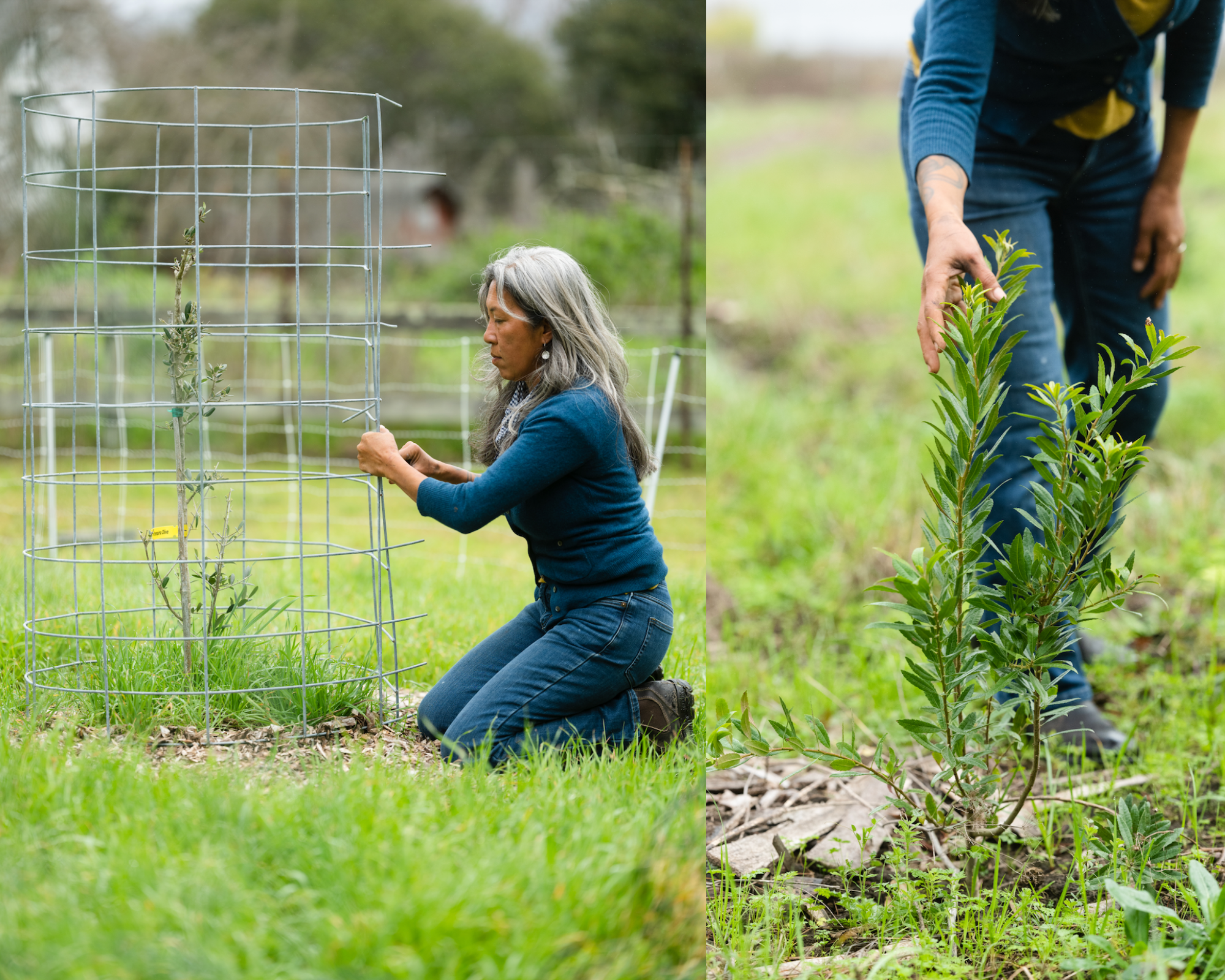
The radish provides cover to a covey of quail, Sirima explains.
“There are 40 or so quail born in the spring and even by the end of summer, most of them are still thriving because of all that radish cover,” she says. “Radish roots breaking up the hard pan has made the soil softer, and the cover helps capture the moisture in the air. It’s remarkably humid in the middle of all that radish. It can get so dry here due to the prevailing wind, and we’re hotter than before, like all places. If I can keep the orchard green, I can help nature help itself and everything along.”
With all of this, how does she find time for art? Sirima has been a full-time artist since 2014. When asked, she shakes her head and smiles.
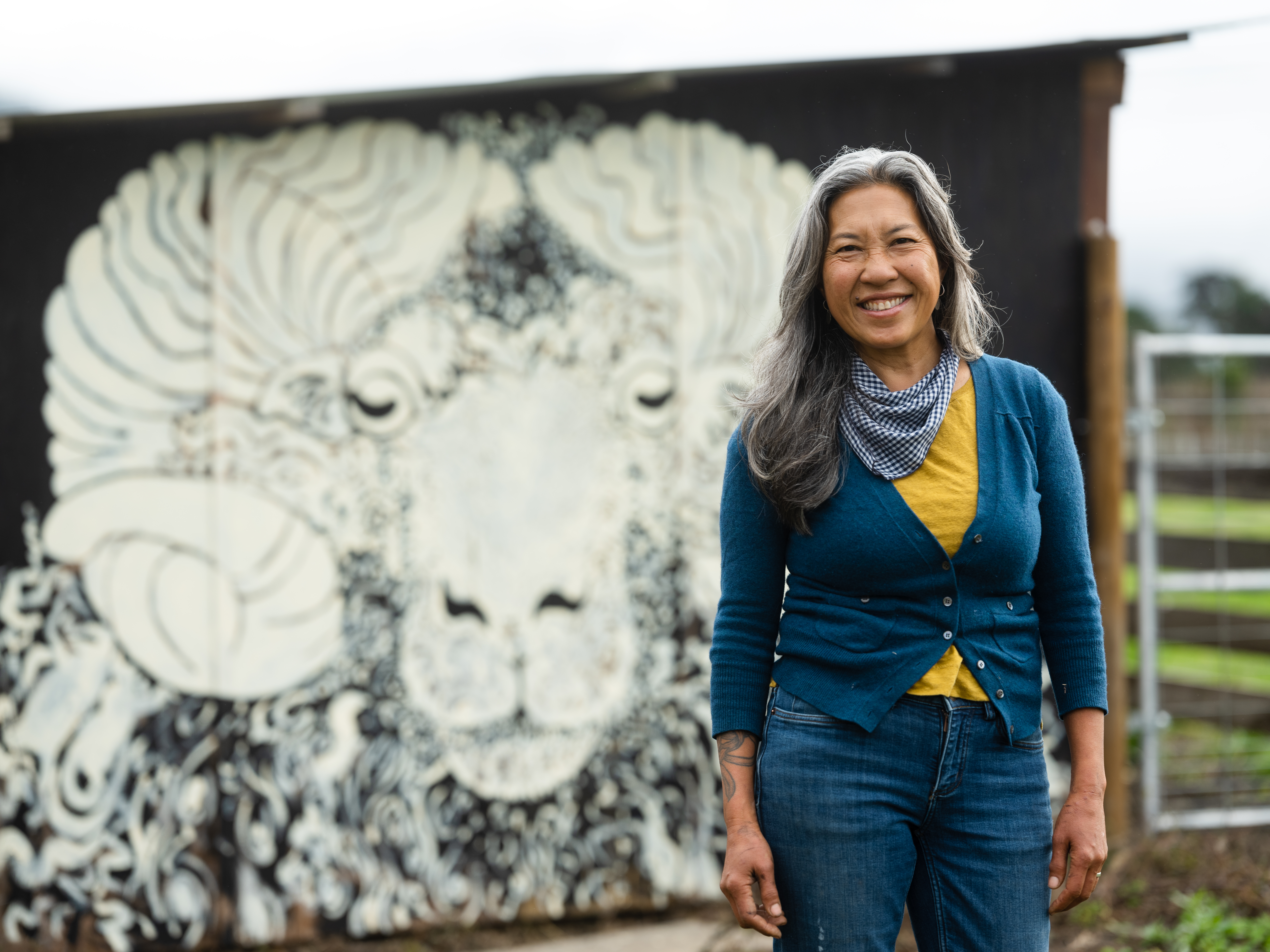
“There’s beauty in the creation of all these things on the farm,” she says. “Shaping the land, building a shed, weaving a willow fence or arch. It comes back around to why I need to make art. I’m interested in the environment and human ingenuity and partnership with the environment. At the heart of it is this balance in living in partnership with Nature.”
Sirima majored in environmental studies and art and mostly did environmental art, huge outdoor sculptures. She had to complete Sculpture, Fiber Arts, and Printmaking to satisfy the requirements of her Studio Arts major.
“That’s the first time I learned to weave on a loom and I barely remember the natural dye portion of those classes,” she says, smiling. “Over the years, I denied myself of art. I had my son. I worked in corporate America, for horticulture and technology companies. I did it for 20 years and then I popped. I was environmentally ill. I literally felt sick.”
Her last corporate employer organized Sirima out of her position and she turned down a new job offer. That’s when she decided to put her Art degree to use and try wholesale letterpress, teaching, and residencies for a year. After 18 months of experimentation, everything came together in 10 days.
“I sublet my loft in the Dog Patch and came out to West Marin, where I met another printmaker and opened Ink Paper Plate. It had a good run for five or six years.”
And, shortly before the pandemic, Aggie’s son, Walter, and Sirima met through a mutual circle of friends. They later married.
Sirima introduced sheep to Blackberry Farm and today has a small flock of registered Fine Fleece Shetland and Shetland x Gotland sheep. Their raw fleeces, roving and yarn are in high demand.

Sandra Guidi, a fellow Fibershed producer and nearby shepherd at Black Rock Ranch in Stinson Beach, “was one of my first sheep mentors,” Sirima says. “A whole slew of shepherdesses have lent their wisdom and experience to me in person and from afar. I’m particularly grateful for the resources and community that Fibershed has provided.”
Sarah Keiser, Fibershed’s Intersectional Land Stewardship and Community Grazing Initiatives Coordinator, showed Sirima how to improve rotational grazing and extend her pastures with techniques like strip grazing with electric fencing; trialing pasture mixes to suppress noxious weeds; and getting sheep into the orchard alleys.
“It’s always about fencing,” Sirima laughs. “Hard fencing, electric fencing, more fencing, pens, and paddocks. I’ve spent three years on fencing and still need to work on the perimeter. We’re getting bobcats and coyotes. I guess it’ll be a lifetime of maintenance.”
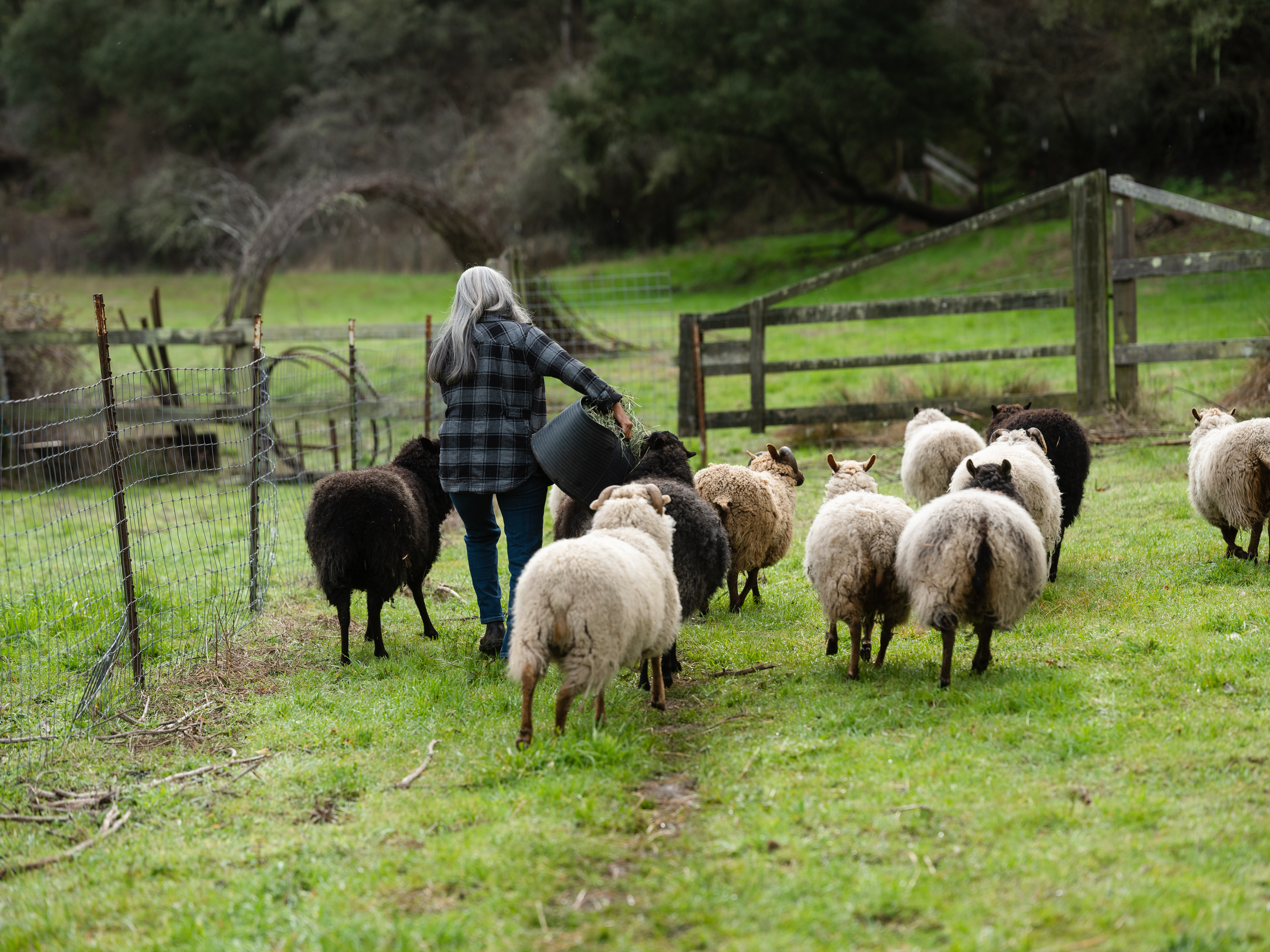
Sirima continues, “I do a seasonal rotation and push their grazing to control weeds and manage the load on the land. We select a few ewes to breed with our ram and separate sheep after shearing. We put the bred girls in the richest pastures – high-protein fields with brassica mix, clover, olive and bay trees. Then they lamb in the paddock and nursery pasture, where the lambs are close and protected.”
“You can feel the difference in the soil,” Aggie says. “I’m walking on sponge instead of tarmac.”
And that, perhaps, is the most accurate, meaningful measure of all.
—
You can learn more about Blackberry Farms on their website and follow their story on Instagram and Facebook.
Blackberry Farm is a part of Fibershed’s Producer Network — a membership-based network of farmers, ranchers, designers, sewers, weavers, knitters, felters, spinners, mill owners and natural dyers living and working within 51 counties in the North and Central regions of California. To connect with regional producers and their work, check out our Producer Directory.
